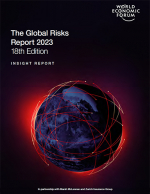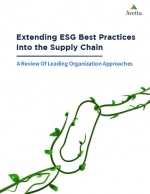Enabling Trade: From Valuation to Action
Implementing Trade Facilitation and Understanding New Challenges
Business people the world over are looking for practical ways to sell into new markets and buy from whoever can offer them the best product.
Small and medium-sized businesses, emboldened by the promise of e-commerce, look much further afield than they ever did before, while large industrial companies work to serve newly prosperous economies and cut costs in the face of new competition.
Governments recognize this opportunity and aim to welcome global value chains, both through domestic reforms and international negotiations.
Increasingly, the challenge is how to implement reform. In a world where average tariffs have fallen into single digits, meaningful reforms require a much wider set of stakeholders to build the conditions for global supply and value chains.
Following the successful negotiations at the World Trade Organization’s (WTO) Ministerial Conference in Bali, Indonesia in late 2013, the WTO and the world are faced with both the implementation challenge and the question, “What’s next for trade facilitation?”
The Trans-Pacific Partnership Agreement and the Transatlantic Trade and Investment Partnership, for example, are designed to be “deep” trade agreements, reaching far behind the border to enable equitable transnational commerce.
This effort is eminently worthwhile. The World Economic Forum’s Enabling Trade: Valuing Growth Opportunities report, produced in 2013 with the support of the World Bank and the management consulting firm Bain & Company, found that reducing even a restricted set of supply chain barriers halfway to global best practice would yield a nearly 5% increase in GDP, or six times the benefit of removing all remaining tariffs. The benefits to emerging nations, in particular in Africa and South-East Asia, would be proportionally much higher.
Business is looking for a modular, harmonized way to operate. Here, it is useful to recognize the importance of foreign direct investment; sales by foreign-owned firms are roughly 50% higher than world merchandise trade (US$ 26 trillion vs US$ 18 trillion, respectively). Increasingly, firms are considering whether they can set up sourcing and distribution operations in a similar way across many countries.
To allow a “plug and play” approach to trade and investment, multiple agencies within national governments (e.g. customs authorities) need to consider how their domestic requirements may affect the international supply chain.
Given that they may already benefit from tariff preferences, non-tariff reforms are particularly important for low-income countries.
The ability to contribute to a global value chain through task specialization is an opportunity open even to very low-income countries, provided they can meet the international norms for that task.
Meeting those norms becomes a tipping point for trade.
What’s Related




Favorites





